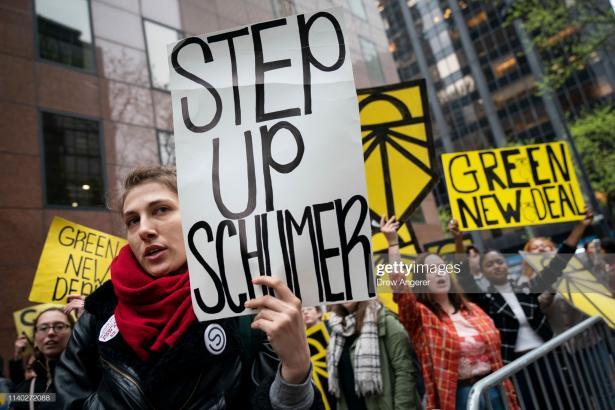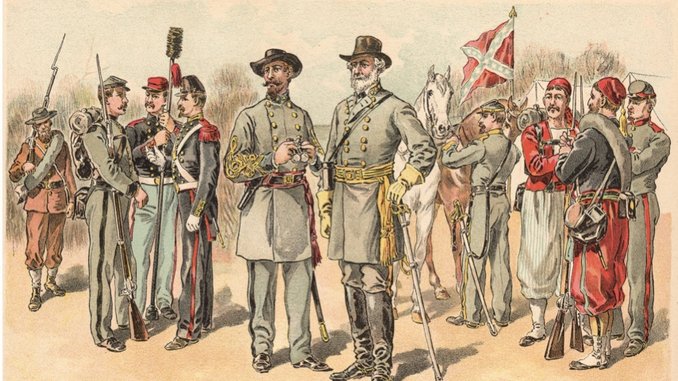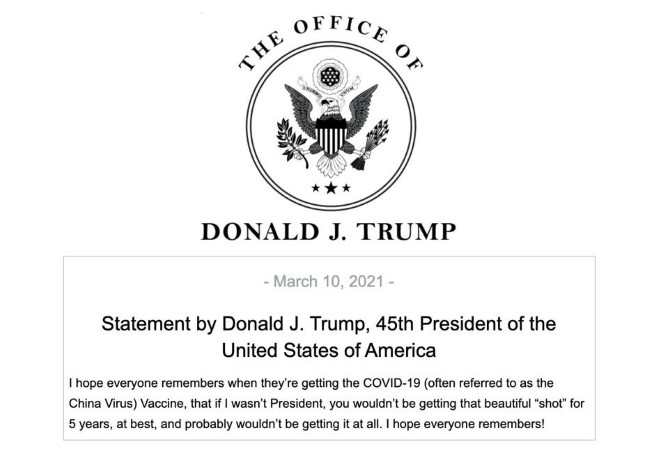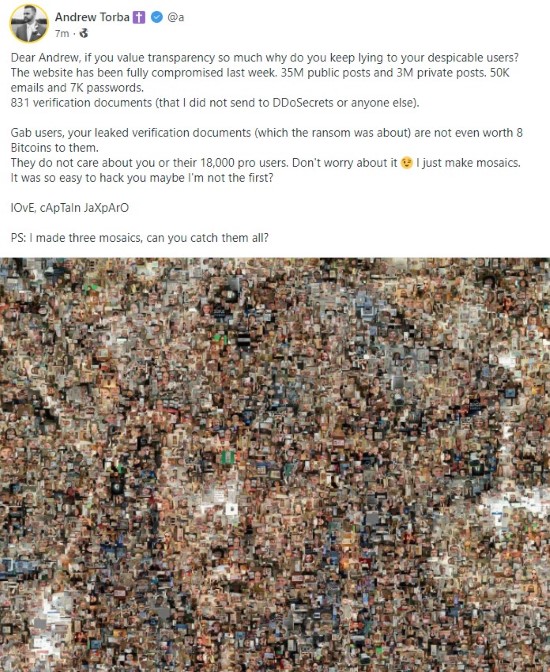Can Social Movements Realign America’s Political Parties to Win Big Change?
Groups such as Sunrise and Justice Democrats are reviving the old idea of realignment, with hopes of provoking new political transformations.
March 30, 2021 Mark Engler and Paul Engler

Activists rally in support of proposed 'Green New Deal' legislation outside of Senate Minority Leader Chuck Schumer's (D-NY) New York City office, April 30, 2019 in New York City. , Drew Angerer/Getty Images
In the second week of November 2018, the Sunrise Movement made a sharp transition. Throughout the prior year, the youth-based climate organization had clocked long hours working in support of Democratic candidates in an array of selected districts — walking miles to knock on doors, identifying sympathetic voters and getting people to polls. Now, dozens of Sunrise members sat on the floor in the Washington, D.C. office of Rep. Nancy Pelosi. Scores of others spilled out into the hallway, lining the walls of the office corridor and carrying signs in the group’s signature yellow and black that read “Green Jobs for All” and asked “What Is Your Plan?” The demand of the sit-in was that the Speaker of the House endorse the Green New Deal, an ambitious legislative program to decarbonize the economy — something Pelosi was hesitant to embrace. In short, Sunrise had abruptly gone from campaigning hard for the Democratic Party’s members to fiercely protesting its leaders.
Casual observers could be forgiven for being confused or thinking there had been a sudden change of strategy. There hadn’t.
The action reached a climax when one of the newly elected congresspeople that Sunrise had supported, New York Rep. Alexandria Ocasio-Cortez, decided to join them. It created a striking image: a member of Congress who had not even been sworn in, standing in the center of a circle of nonviolent dissenters, confronting her own party’s leadership. The civil disobedience became a media sensation, propelling the Green New Deal into the spotlight of national politics and markedly changing the terms of debate over climate policy.
One might ask what the thinking behind Sunrise’s unusual two-step might be: What big idea would lead the group to doggedly support Democratic candidates one week, then stage a protest in the office of the party’s most senior official the next? And could such a maneuver lead down a coherent path toward political progress?
In a word, the idea in question is “realignment.”
The concept of realignment is not new. It has a history that runs through the works of some of the country’s most renowned mid-century political scientists, as well as through the careers of figures such as legendary organizer Bayard Rustin, eminent socialist Michael Harrington and conservative culture warrior Newt Gingrich. It runs today through Ocasio-Cortez and other social movement-oriented Congressional Democrats who announce the intention, in AOC’s words, of “bringing the party home” — and who in fact may take it places it has never gone before.
“Realignments happen when a long-term social transformation, a crisis, and the right leader converge to change the landscape,” writes political journalist George Packer in The Atlantic. The word often resurfaces with the inauguration of new presidents. Particularly with his 2008 election, which brought a super-majority for his party in the Senate, Barack Obama was seen by some commentators as ushering in a permanent Democratic majority. That is, until Donald Trump broke through the Democrat’s “Blue Wall” in Pennsylvania, Michigan and Wisconsin and flipped at least some voters in the white working class, giving rise to speculation that his win was the realignment of lasting consequence. Biden’s election has been seen as less historically weighty than those of his predecessors. Nevertheless, his success in passing the landmark $1.9 trillion recovery bill led New York Times columnist David Brooks to dub him a “transformational president” and prompted New York magazine’s Eric Levitz to contend that “the law could plausibly mark a leftward realignment in American policymaking.”
Such claims are not unique. Left scholar Mike Davis notes that, while it is mostly old-timers who remember when the idea of realignment was at the peak of its popularity, the notion that certain moments represent fundamental ruptures, reshaping what ideas parties stand for and what constituencies they represent, has a stubbornly persistent appeal. Even as academics debate the theory’s validity, he writes, “the thesis of the ‘critical election’ that durably realigns interest blocs and partisan loyalties remains the holy grail of every actual presidential campaign.”
Outside of presidential elections, realignment has another meaning for social movements promoting far-reaching change. For groups like Sunrise and Justice Democrats — known for its critical role in recruiting Ocasio-Cortez and propelling her insurgent primary campaign in 2018, as well as for helping to support other members of “the Squad” — it is a way of thinking big. Rather than being content to remain in the role of always pushing from the outside or supporting a few handpicked politicians, the concept encourages them to aspire to a more fundamental shift in power relations. It is part of a strategy to form and advance a bloc that can become a dominant force in the U.S. political system. It means, effectively, building a bold new party within the shell of the old.
Could such a feat be possible? What lessons can we learn from realigners of the past? And what is the practical consequence of movements naming this as a key strategic goal today?
A once and future dream
The academic theory of electoral realignment has been called “one of the most creative, engaging and influential intellectual enterprises undertaken by American political scientists during the last half century.” It was first advanced by Harvard professor V. O. Key, Jr. in his 1955 article “A Theory of Critical Elections.” Later, it was developed by scholars including Walter Dean Burnham, a student of Key’s, and James Sundquist, a former speechwriter for Harry Truman. The theory proposed that America’s political party system has evolved in punctuated bursts — often 30 to 40 years apart — and that certain vital elections end up defining their eras by mobilizing fresh groups of voters and putting new issues at the fore of the public agenda. For the likes of Burnham and Key, “critical realignment” involves intense, disruptive moments in which partisan allegiances are reshuffled, majority coalitions fall, and previously uncompetitive minority parties gain new acceptance of their politics.
Think of contests such as the election of 1860, which marked the ascendance of Abraham Lincoln’s Republican Party and presaged a civil war over slavery; or 1896, when business-funded Republican William McKinley defeated populist-aligned William Jennings Bryan; or 1932, which gave rise to the New Deal order. These elections had generational consequences. They set the mold for the type of governance that followed in subsequent decades: After New Deal liberalism became dominant, even its critics were forced to govern within its core assumptions about the role of government. Likewise, after the Reagan Revolution of the 1980s, even Democrats acquiesced to the idea that “the era of big government is over.”
Each of the major claims of academic realignment theorists has been disputed, with a variety of other scholars arguing that American party development is in fact more gradual and that punctuated 30-year cycles cannot be reliably predicted. But even as this academic debate unfolded over the decades — and indeed even before many of its key entries were written — the concept of realignment took on a life of its own both in popular commentary and in the world of political organizing.
In the early 1960s, a number of leaders on the democratic socialist left, including Michael Harrington — whose 1962 book, “The Other America,” helped to animate the Kennedy administration’s War on Poverty — set out to intentionally fracture the Democratic Party in order to build it into something better. Southern Dixiecrats had been an important part of Franklin Delano Roosevelt’s New Deal coalition, but their inclusion had proven to be a devil’s bargain. Today, it is well known that powerful racist senators maintained Jim Crow by obstructing civil rights legislation for decades; less well-remembered is the critical role the “Southern Vote” played in pushing anti-union legislation such as the Taft-Hartley Act. As historian Paul Heideman explains, “Figures from Walter Reuther to Martin Luther King, Jr. noticed that the Democratic Party contained within it both the most liberal forces in official American politics, like Hubert Humphrey, and the most reactionary, like Strom Thurmond … [T]he Dixiecrats had prevented the Democrats from assuming a coherent political identity as the party of American liberalism.”
Harrington and others believed that, if “Southern racists and certain other corruptive elements” could be pushed out, the Democratic Party could resemble something like a mainstream European social democratic party. Harrington argued in 1962 that a union of welfare state liberals, organized labor, Black voters empowered by the civil rights movement, peace movement constituencies, and other progressive “conscience” voters could “forge a dynamic new coalition which will force a basic realignment in American politics.” From that time until his death in 1989, Harrington and the organizations he would help form — first the Democratic Socialist Organizing Committee and later the Democratic Socialists of America, or DSA — would be associated with this realignment strategy.
In the mid-1960s, things seemed to be on track. With Lyndon Baines Johnson’s landslide victory in 1964, decisive Democratic majorities in both houses of Congress, and organized labor at the peak of its postwar power, it seemed realistic to think that a strong social-democratic majority could be assembled without the reactionary Dixiecrats.
Bayard Rustin, another important backer of the strategy made this point in his famous 1965 essay, “From Protest to Politics.” A prodigiously talented organizer who was kept out of the spotlight due to homophobia but nevertheless served as an advisor to King and a lead planner for the March on Washington, Rustin wrote: “It may be premature to predict a Southern Democratic party of Negroes and white moderates and a Republican Party of refugee racists and economic conservatives, but there certainly is a strong tendency toward such a realignment” — a tendency, he believed, that would only grow stronger as millions more African Americans in Southern states were registered to vote.
Elsewhere, Heideman notes, Rustin further explained his thought: “If we only protest for concessions from without,” the strategist reasoned, “then [the] party treats us in the same way as any of the other conflicting pressure groups. This means it offers us the most minimum concessions for votes.” However, he concluded, “if the same amount of pressure is exerted from inside the party using highly sophisticated political tactics, we can change the structure of that party.”
The right realigns
The logic was sound. But in hindsight it is clear that things didn’t quite go as planned. While the Dixiecrats did flee the party after the Civil Rights Act of 1964, social democrats struggled in the wake of the Southerners’ departure. The Vietnam War was one big reason for this. Many establishment liberals proved themselves all too willing to follow LBJ into the morass of the conflict, permanently alienating themselves from the rising New Left.
Secondly, on the labor front, realigners had envisioned backing from unionists in the mold of Walther Reuther of the United Auto Workers — a stalwart progressive who lent active support to civil rights struggles. They instead ran up against an AFL-CIO under the direction of George Meany, a bureaucratically-minded labor leader who prided himself on never leading a strike and never walking a picket line. The labor federation backed hawkish foreign policy, and in 1972 the AFL-CIO declined to officially endorse the presidential campaign of Democratic nominee George McGovern. For his part, Meany was seen golfing with Nixon and members of his cabinet. Tragically, by the end of his life, Bayard Rustin had become ensconced in defending such labor officialdom; once a prominent pacifist, he took on the role of scolding radical critics of the Vietnam War.
Through the following two decades, Harrington and other leftists continued their push to empower progressives within the Democratic Party. But, in the end, it was conservatives who were able to capitalize on changing social conditions.
“Like us, the New Right believes in realignment,” wrote historian and future Democratic Socialist Organizing Committee national director Jim Chapin in 1975. Although slowed somewhat by the crisis of Watergate and then by the Democrats’ move to nominate a Southern evangelical, Jimmy Carter, in 1976, the Republicans were able by the 1980s to realize a version of the “southern strategy” famously articulated by Nixon aide Kevin Phillips. A newly aggressive assault on organized labor helped. With profit margins declining in the 1970s, segments of capital that had previously tolerated New Deal policy revolted. They joined with other corporate interests to break the unions — an attack fully backed by the White House once Ronald Reagan took office. Meanwhile, operatives such as Paul Weyrich, founder of the Heritage Foundation, deftly brought apolitical religious conservatives into the Republican fold under the banner of the “moral majority.”
At times, realignment rhetoric figured explicitly in this work. As one example, Weyrich acolyte Newt Gingrich convened a two-day conference of conservative leaders in 1989 devoted to discussing how to lock in a right-wing majority with a strategy of confrontation rather than bipartisanship. Responding to the event’s doubters, Gingrich argued in a letter to the Washington Post that the meeting had been an important step in bolstering a Republican Party that could “drive realignment from the presidency down to the precincts,” spreading conservative dominance “to Congress, governorships, state legislatures and local government.”
In 1976, Harrington wrote, “[T]he nation is at one of those turning points which then fix the outlines of an entire era to come.” And while hopes for realignment within the Democratic Party dimmed in the decade that followed, they did not vanish entirely. Early in the Reagan era, Frances Fox Piven, the great theorist of disruptive power, argued that mass voter registration of people on social welfare rolls could “force a party realignment along class lines” — particularly if accompanied by defiant protests over voting rights. Meanwhile, Jesse Jackson’s insurgent campaigns in 1984 and 1988 presented the possibility, albeit fleetingly, that the Democrats could be remade in the image of a multiracial, class-conscious “Rainbow Coalition.”
Looking back, it is undeniable that the era’s organizers did not prevail in realizing such a prospect. And yet the failure of progressive realignment in the United States at that time was hardly unique. Social democratic efforts throughout much of the world suffered dramatic setbacks, and alternate strategies — such as creating a “Citizens Party” or building up radical factions within industrial unions — also did not yield particularly hopeful outcomes. Ultimately, the left was entering into a period of decline. In 1992, when Democratic candidate Bill Clinton captured the presidency, he would consolidate the Reagan revolution by declaring the kind of “big government” programs of the New Deal and Great Society obsolete. A generation of neoliberal, “New Democrat” leaders followed his lead and compromised their way to the center.
An age-old debate, settled?
Much has transpired since to reset the table of political calculation, but possibly nothing as immediately consequential as a 2016 campaign that defied all predictions. Prior to that time, virtually no one in America’s class of professional political commentators could have imagined that a 74-year-old, Jewish, self-described socialist who had built his political career as a Vermont independent would come shockingly close to defeating Democratic Party insider and presumptive Obama successor, Hillary Clinton.
Bernie Sanders, addressing crowds with a pronounced Brooklyn accent and calling for a political revolution against the billionaire class, rose to win 23 states in the presidential primaries — including Oklahoma, West Virginia, Michigan, North Dakota and Idaho, all states later claimed by Donald Trump. Well after the election year ended, Sanders polled for a time as the most popular active politician in America. Then, in 2020, he made another impressive run, emerging as a frontrunner in a crowded Democratic field. Sanders won the vote in key early states of Iowa, New Hampshire and Nevada before falling to Joe Biden’s “Super Tuesday” surge.
The Sanders campaign of 2016, in particular, reinvigorated left debate about electoral strategy. At the same time, it represented something of a paradox: By running within the mechanisms of the Democratic Party, Bernie had remarkable success in mainstreaming progressive ideas, providing an attractive alternative to the marginalization typically associated with third-party bids. And yet, his failure to secure the nomination — and a perception that he was unfairly robbed by the party establishment — left many supporters nursing bitter resentment toward the Democrats, whom detractors claimed were morally bankrupt. “They have always been, they always are, and they always will be,” wrote one disaffected Berniecrat.
By the 1990s, DSA had already moved away from the traditional realignment position pursued by Harrington, and it had declined to officially endorse presidential candidates including Bill Clinton and later Al Gore in 2000. And yet, the dilemmas that the strategy sought to address have not disappeared. Chris Maisano, an editor at Jacobin, writes: “The debate over whether … electoral action should be waged on Democratic Party ballot lines is perhaps the most persistent controversy on the U.S. left.” The strong grip of corporate Democrats dampened hopes that the party could ever be remade and kindled dreams of an independent political formation — a Green, Worker’s, Progressive or Labor Party. And yet, entrenched barriers to third parties, most notably the lack of proportional representation and notoriously stringent ballot access requirements in many states, has made the American two-party system largely impervious to outside assaults for a half-century or more.
The Sanders campaign swelled the ranks of DSA and gave rise to new initiatives including Justice Democrats and Our Revolution. Moreover, the combination of anger at the Democratic establishment and recognition of the party’s primaries as fertile ground for outsider candidates to contest — and sometimes win — has prompted a new wave of progressives to enter these elections at all levels of government, with some candidates openly identifying as democratic socialists. In the U.S. House of Representatives, this has resulted in the formation of the Squad, a group initially made up exclusively of women of color — Ocasio-Cortez, Minnesota’s Ilhan Omar, Rashida Tlaib of Michigan, and Ayanna Pressley of Massachusetts — who unabashedly promoted a policy agenda far to the left of party leadership. In some instances, such as Ocasio-Cortez’s victory over Joe Crowley, the fourth-ranking House Democrat, its members ousted powerful incumbents while articulating a new vision for the party.
While many activists may not think of themselves as realigners, a broad practical consensus has emerged around doing electoral work largely through the Democratic Party ballot line. Georgetown historian Michael Kazin argues that “as a consequence of his two national campaigns, Sanders and his legion of admirers embedded a growing social-democratic movement inside the heart of the Democratic Party.” Meanwhile, Maisano writes, “the political developments of the last few years have effectively settled the Democratic Party question, at least for now.” He adds: “Whether we like it or not, working-class organizers will continue to use major party primaries so long as they exist and bear fruit.”
To be sure, there remain strategic differences and debates. Among DSA members, some see a rupture with Democrats as inevitable. They advocate for building an identity and infrastructure that is as independent as possible from the Democrats, in preparation for an eventual “dirty break.” Others within DSA are comfortable with the prospect of laboring within the Democratic Party structure for the foreseeable future and even attempting to gain power over internal party machinery — moves consistent with realignment strategies of the past. As one example of this tendency, a leftist slate in the southwest recently succeeded in sweeping the top five elected positions of the Nevada Democratic Party, prompting the whole of the state party’s centrist staff to resign in dismay. Activists working in this vein often ally themselves with a wide range of other groups seeking to promote left-of-center candidates. These include newer, Sanders-inspired groups, but also others such as the Progressive Democrats of America, the Center for Popular Democracy Action, MoveOn, People’s Action, and the Working Families Party — not to mention more progressive unions, community and civil rights groups.
Each organization possesses its own orientation with regard to the future of the Democrats. But their leaders may well overestimate their ability to determine the long-term impact of their work. As trade unionist and DSA activist Dustin Guastella observes, on a certain level ideas such as “realignment” and “break” are not actually strategies. “Rather, they are outcomes of political struggle,” he writes. “They depend on how the major parties react to shifts in the electorate and organized political action: either the party is unable to heal an internal divide, resulting in a ‘break’ (like the Whig moment in the 1850s) or the party adopts the policies of insurgents in order to consolidate a new constituency (like the New Deal moment in the 1930s).”
Despite some differences among them, a robust collection of groups opposed to the Democratic Party’s centrist old guard and corporate donor base are now seeking to build independent infrastructure that can allow them to recruit and run dissident candidates. They are looking to build the social base for left ideas. And they are working to craft appeals that will allow them to draw together powerful majorities. The more successful they are, the more they will make a mark on the landscape of American party politics — even if the exact shape of that mark might be difficult to predict.
Who are today’s realigners?
Many within this social movement ecosystem do not use the language of realignment. But a few groups, such as Sunrise and Justice Democrats, evoke the idea as an important part of their vision of change. Strategists in these organizations are today’s realigners.
For Justice Democrats Executive Director Alexandra Rojas and Communications Director Waleed Shahid, the Sanders campaign offered only a taste of “what was possible in transforming the Democratic Party into a vehicle for lasting social change.” Meanwhile, Sunrise co-founder Will Lawrence expresses confidence in the usefulness of reclaiming realignment as a strategy. “It’s the secret sauce,” he said. “We couldn’t have done what we have without our understanding of alignments and factions guiding how we navigate political choices.”
So what significance does the idea of realignment have for how these organizations behave?
The lessons that can be derived from the concept’s history are filled with caveats. The academic literature on realignment is largely descriptive — seeking to understand past developments in American political history — rather than prescriptive. It does not offer a clear path forward for those seeking to organize social movements. Guido Girgenti, the media director for Justice Democrats and a co-founder of Sunrise, reflects on this challenge in the 2020 Sunrise book “Winning the Green New Deal.” “Realignments are messy, rare and big,” he contends in an essay written with Shahid. “No single person or group has their hand entirely on the rudder, and there’s no step-by-step method to succeeding.”
These concerns notwithstanding, the concept of realignment has some important practical effects for the groups that use it, giving them language to highlight a set of strategic considerations that arise as they craft an “inside-outside” approach to politics. Three of these effects are especially worth highlighting.
First, as Rustin suggested long ago, thinking about realignment encourages movement organizations to express large ambitions that go beyond forever functioning as outside pressure groups or single-issue lobbies. Instead of aiming merely to extract concessions by being the thorn in the side of elected officials and other powerholders, realigners are vying for power. Echoing Mike Davis, Girgenti and Shahid write, “The project of an era-defining realignment is perhaps the biggest goal a movement can aspire to in American politics.” In their pursuit of policies such as the Green New Deal, Sunrise and Justice Democrats seek not only to alter the accepted common sense about the solutions our society needs, but also to back up such cultural change with a reorientation of the political forces that can pull the levers of state power.
Second, the concept orients the realigners toward working within the Democratic Party, but also toward being in conflict with others inside the party’s big tent. Maintaining a majority that can defeat reactionary Republicans is important. But just as critical for these groups is the objective of advancing a specific faction within the Democratic coalition, with the aim of making that arm of the party into the dominant one. This orientation creates a marked distinction between Sunrise and a group like, say, the League of Conservation Voters. The latter generally works to get more Democrats elected (and occasionally endorses Republicans with nominally pro-environmental voting records), without pushing for a wider ideological shift in the party. Meanwhile Sunrise adopts a more confrontational strategy, focusing on electing champions and — in line with Piven — retaining direct action as a core part of its repertoire. It is willing to use both door-knocking and sit-ins as ways of influencing the party’s composition and ideology.
In his classic 1942 study on democratic politics, E. E. Schattsneider described a political party as “an organized attempt to get control of the government.” Contemporary political scientist Daniel Schlozman adds, “Because political parties organize social conflict … they also structure the possibilities for movements to achieve ongoing influence.” But in America, the peculiarity of the party system means that these opportunities are structured in unusual ways. In countries with parliamentary systems, the dynamics of realignment largely play out in debates between different political parties with distinct ideologies. These parties might then have to decide whether or not to enter into coalition governments with one another. However, in the United States, the ingrained two-party system means that tension between different factions commonly takes place within the major parties. “In any other country Joe Biden and I would not be in the same party,” Ocasio-Cortez has stated. “But in America, we are.”
Given this reality, an often-cited maxim holds that organizers should not think about the Democrats as a coherent collection of like-minded individuals. Rather, they should see the party as a terrain of struggle. As Rojas and Shahid write, “It’s not a team, it’s the arena.”
In an interview with Dissent magazine, Shahid further elaborated on this reasoning: “A good way of thinking about the situation in American politics today is that the left wing of the party — whatever label you want to use for it — is a junior partner to a senior partner in a coalition government,” he said. “The senior partner is the party of Pelosi and Schumer and Hakeem Jeffries and Dianne Feinstein. They have more power. But we are in a coalition together to get over 50 percent and keep the Republicans out of power.”
Long term, the idea is to shift the balance of power so that the left becomes the dominant faction, reversing the current roles. At that point, risk-averse political pragmatists seeking to stake out “mainstream” and uncontroversial positions will model themselves after progressives, rather than the Clintonian “New Democrats” of the past. “If you look at U.S. history,” Shahid argues, “it isn’t just ideologically driven figures like [anti-slavery champion] Thaddeus Stevens or [New Deal-era labor advocate] Robert Wagner that drive politics, but also … people who come from the old guard of the party but see history changing beneath them. That is a really good sign for the broader trend of realignment. At least in my reading of history, that’s how change has happened: not only does the party co-opt you, but you also co-opt the party.”
Reading the clock of the world
A third consequence of thinking in terms of realignment is that it encourages activists to carefully take stock of the amalgam of social forces at play on the American political scene. Realigners often cite the late, storied Detroit organizer Grace Lee Boggs, who urged advocates of transformational change to ask, “What time is it on the clock of the world?”
One can fault past strategists like Rustin and Harrington for miscalculating how segments of capital, labor or the right would respond to dynamic social conditions. But their political plans, unlike too many liberal projects, were not rooted merely in idealism or wishful thinking. Rather, they were based on a hard look at the fault lines in the dominant parties and on a plausible vision of how a majoritarian grouping could have formed amid the social movement upheavals of the 1960s. A similarly deliberate probing of the currents flowing through America’s electorate is surely needed now.
Could there be a structural basis for realignment today? Current realigners tend to endorse the left-populist analysis that the 2008 economic crash and the lingering insecurity faced by working people has created a crisis of legitimacy for neoliberalism. In many parts of the world, traditional parties offer no adequate solutions, and so they have lost ground to insurgent groups that rally public resentment against established elites.
Of course, it is not only progressives attempting to fill the void. As in the past, the right believes in realignment, too. Conservative ethno-nationalists, playing especially on racial grievances, have shown that they can also ride the wave of disaffection; Donald Trump is by no means the least among them. Currently, fallout from the COVID-19 pandemic and the mounting crises of climate change have only furthered the destabilization of the previous order.
Neoliberal “New Democrats” may have once gained momentum within their party. But even arch-centrist Rahm Emanuel, former Chicago mayor and advisor to several Democratic presidents, acknowledges the terrain has since shifted. “Admittedly,” he stated in early 2020, “today’s landscape is much friendlier for progressive ideas than it was when either Mr. Clinton or Mr. Obama was running for office.” In part, this reflects the hard work that movements have already done in shaping public opinion. But it is also aided by demography. As Shahid contends, “One of the signs of realignment happening today is the generational shift. Millennials self-describe as very ideologically left compared to other generations.”
The country is also growing more diverse, with the power of older, white voting blocs eroding in the face of demographic movement toward a “majority-minority” country. These trends give hope for revival of the kind of alignment envisioned by the Rainbow Coalition of the 1980s. Along these lines, Rojas and Shahid quote historian Barbara Ransby, who writes of the Squad: “They are wisely acting as if they represent the demographic and political majority that their generation will become.”
“They are not only the future of the Democratic Party,” Ransby added. “They are the future.”
Nevertheless, Shahid warns, “I’m not someone who thinks demographics are destiny. You still have to do politics.” That means making tough decisions. While realignment might give groups like Sunrise and Justice Democrats a defined orientation in crafting their response to present political conditions, it leaves many important questions unanswered. For instance, strategists must weigh the relative importance of “mobilization” and “conversion” — whether a faction aspiring to power should focus on more aggressively activating its own base or on peeling off people previously devoted to other groups. “If the mobilization analysts are right, new voters are the key to realignment,” Piven explains in her book “Challenging Authority.” On the other hand, “if the conversion analysts are right, changing party loyalties among existing voters are the key.”
Other questions include: How to formulate a “race-class narrative” with widespread appeal? How much should left groups target moderate incumbents in strongly “blue” Democratic districts and try to replace them with progressive champions, versus pursuing a 50-state strategy and trying to win in unexpected places? Should insurgents embrace the goal of representing the true “soul of the party,” or should they reject partisan language and attack moribund Democratic Party structures as part of the establishment? How “coalitional” should they be with other groups at a given moment — including those they might not agree with fully — and how confrontational?
Even as they consider these dilemmas, the organizers can take solace in having a clear view of the task they face. “The common sense in the country is fracturing,” Sunrise teaches in its activist trainings. “We have a generational opportunity to shape it. If we don’t, the right will. Inclusive populism is about uniting the largest ‘we’ possible and winning [over] common sense beyond our own movements and issues.” Could the urgency in such a perspective drive a reordering of American politics? While some view history as a cautionary tale, today’s realigners take inspiration from past organizers who have wrestled with this grand ambition and sometimes, improbably, succeeded.
Research assistance for this article provided by Akin Olla.



 A typical Anon statement on “China Virus.”
A typical Anon statement on “China Virus.”
 AKA, “the vaccine is only dangerous to those who choose not to receive it!” Brilliant.
AKA, “the vaccine is only dangerous to those who choose not to receive it!” Brilliant. “I put my life on the line for you and got nothing for return” is the QAnon version of “I ___ ___ ___ and all I got was this lousy T-shirt.”
“I put my life on the line for you and got nothing for return” is the QAnon version of “I ___ ___ ___ and all I got was this lousy T-shirt.”




